Association of the microbial culture of follicular fluid,vaginal swab and catheter tip with β-hCG IVF positive and negative
Manoj Chellani, Manju Chellani, Sandeep Rahangdale
Aayush ICSI Test Tube Baby Centre (Unit of Aayush Institute of Medical Science Pvt.Ltd.) Raipur 492001,Chhattisgarh,India
ABSTRACT Objective:To find out the association of microbial contamination withβ-human chorionic gonadotropin (β-hCG) in-vitro fertilization(IVF) positive and negative.Methods:A total of 73 fresh IVF cycle women were included in the retrospective study.Vaginal swab culture samples were collected prior to ovum pick-up and embryo transfer.The follicular fluids were collected during ovum pick-up and catheter tip culture samples were collected after successful embryo transfer.After 14 days of the embryo transfer,women were classified into β-hCG IVF positive and negative.The comparative statistical analyses of aerobic microbial culture reports were done between β-hCG IVF positive and negative women.Results:Out of 73 women,42(57.5%) were found to be β-hCG IVF positive and 31(43.5%) were negative.In the aerobic culture of ovum pick-up vaginal swab,follicular fluid,embryo transplantation vaginal swab and catheter tip,Enterococcus faecalis was found to be higher compared to other bacteria (Streptococcus spp.,Candida,Escherichia coli and Klebsiella).Regarding the comparison between IVF positive and negative,the overall microbial infection rate of vaginal swab culture during ovum pick-up and embryo transplantation was found to be higher in IVF negative women than in IVF positive women (38.71% vs.28.57%);however,it was not statistically significant (P>0.05).The follicular fluid and catheter tip culture microbial infection rate was found to slightly higher in IVF positive women than in IVF negative women (54.76% vs. 41.94%and 19.05% vs. 9.68%,respectively),but there were not significant differences (P>0.05).Conclusions:The aerobic microbial culture reports of follicular fluid,vaginal swab culture,and catheter tip culture are not statistically significantly with β-hCG IVF positive.
KEYWORDS: Follicular fluid culture;Vaginal swab culture;Catheter tip culture;β-human chorionic gonadotropin;In-vitro fertilization outcome
1.Introduction
Infertility is increasing steadily in the world due to lifestyle and environment changes.The most common causes of infertility are ovulatory dysfunction,male factor infertility,tubal disease and some unexplained factors.Infertility is mostly treatedinvitrofertilization (IVF).But the outcome is an ongoing challenge throughout the world,and rates of IVF conception are still low[1].Because it is affected by various factors that influence the normal embryo implantation process,including the women’ age,endometrial receptivity,embryos quality,and transfer technique as well as microorganism infection of the genital tract[2-4].The presence of microbes in the lower female reproductive tract has been associated with adverse pregnancy outcomes after both natural and IVF conceptions[5,6].
The health status of the female genital tract is predominantly related to the presence of a normal vaginal microbiota[7].Infections of the female genital tract may concern the vagina,the cervix,the uterus,or the tubal/pelvic area.Aerobic vaginitis has been described as an inflammatory condition in whichLactobacillusbased microbiota shifts to a microbiota dominated byEnterobacteria,Staphylococci,Streptococci,andEnterococci[8].These disorders of the normal vaginal microbiota have been associated with increased risk of miscarriage and preterm birth[9-11].
Microbial contamination of long-term cell culture is the current concern for assisted reproductive techniques laboratories.Although transvaginal oocyte retrieval for IVF is considered to be relatively safe,occasionally microorganisms colonize culture dishes of oocyte and embryos.These infections are mainly caused by bacterial strains insensitive to the antibiotics used or due to yeast colonization byCandidaspecies,which frequently reside in the vagina or even by other normal vaginal flora,likeLactobacillusas bacterial endotoxins dramatically disrupt granulosa cells growth and functionin vitroin different species[12].In most women,Lactobacillusspecies is the predominant bacteria in the vagina.It reduces the number of other bacteria in the vagina by maintaining a low pH and by producing hydrogen peroxide[13].
Research has shown that women who test negative for bacterial contamination have higher pregnancy rates than those who test positive for bacterial contamination.The role of microbial infection on the outcome of IVF-embryo transfer (IVF-ET) has been studied by several authors with the contradictory results[14,15].Hence,this study has been designed to evaluate the effect of bacterial infection of follicular fluid,vaginal swab,and catheter tip culture on the β-human chorionic gonadotropin (β-hCG) biochemical pregnancy rate in an IVF-ET cycle.
2.Materials and methods
2.1.Participants
The present retrospective study was conducted at our Test Tube Baby Centre from October 2018 to December 2019.In this study,only fresh IVF cycle women whose ovum pick-up and embryos transfer were done in the same cycle were included.Women who undergone with oocyte donation cycle due to less number of oocyte recovery and bad quality of oocyte were excluded from the study.Women who undergone with embryo donation cycle due to the bad quality of oocyte,sperm and embryos were also excluded.Initially,84 women were included,but 11 women were excluded from the study due to the cancel of the embryo transfer cycle.Finally,the study was conducted on 73 IVF positive and negative women.
2.2.Microbial sample collection from follicular fluid,vaginal swab and catheter tip
During the treatment procedure of IVF,microbial samples were collected from follicular fluid,vaginal swab,and catheter tip for each woman.The vaginal swabs were collected prior to ovum pick-up and embryo transfer.The follicular fluid samples were collected from the left and right ovary during ovum pick-up and fluid specimens were aseptically transferred to a sterile culture dish to determine if there was an oocyte present.Following the removal of the oocyte,follicular fluid samples were transferred to a sterile tube and sent for microbial culture.The catheter tip samples were collected following each successful embryo transfer;the embryologist first placed the catheter tip in culture media to check for retained embryo and cut off the distal 2 cm of the transfer catheter using sterile scissors.The catheter tip along with remaining embryo transfer media was placed in a sterile container and sent immediately to the microbiology laboratory for microbial culture.After ovum pick-up,antibiotic medicine was given to the women.After 14 days of embryo transfer,the β-hCG IVF pregnancy tests were carried out.Positive pregnancy was classified by the value of more than 100 ng/μL of the β-hCG test.Out of the 73 women,42(57.5%) were β-hCG positive,and 31(43.5%) were negative.
2.3.Statistical analysis
Statistical analyses were performed on the data of microbial culture report and IVF β-hCG positive and negative women using SPSS Statistics software version 22 (IBM).TheChisquare test and Fisher's exact test were used to analyse the data.The differences were considered statistically significant whenP<0.05.
2.4.Ethics statement
Ethical approval was obtained from the Ethics Committee of the Indian Fertility Society,New Delhi,India (approval No.F.1/IEC/IFS/2018 dated 23/01/2019).
3.Results
3.1.Characteristics of the women
In the present study,42 IVF positive and 31 IVF negative women were involved.Table 1 shows the characteristics of IVF positive and negative women.The causes of infertility included male factor,female factor (i.e.polycystic ovarian disease,poor ovarian reserve,tubal block,and adenomyosis),as well as both male and female factors,and unexplained infertility.
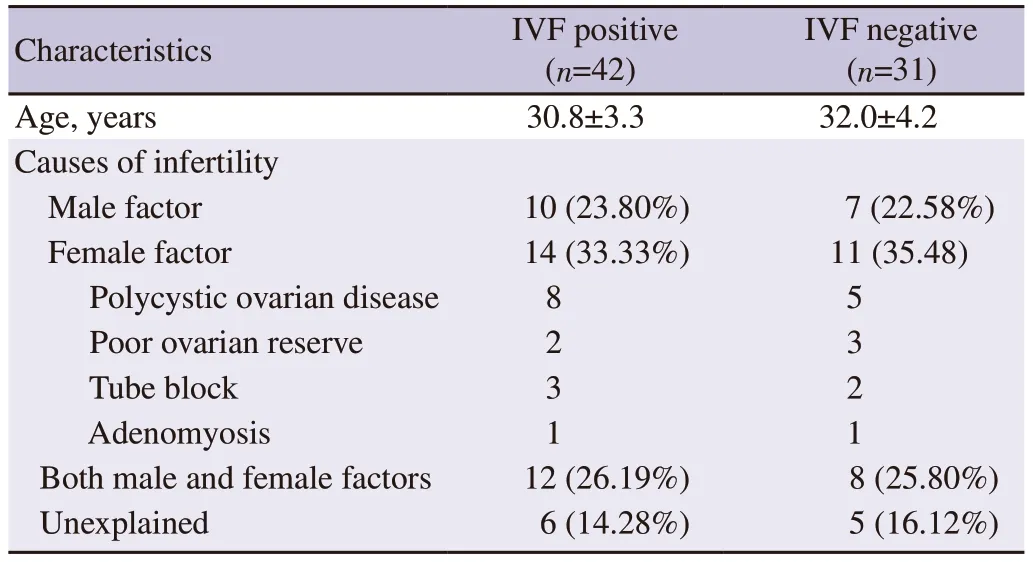
Table 1.Characteristics of IVF positive and negative women.
3.2.Most prevalent aerobic microbe in both positive and negative pregnancy women
In the present study,a total of 73 women of fresh IVF-ET cycle were included.Out of the 73 women,42(57.5%) were found to β-hCG positive and 31(42.5%) were negative 14 days after the embryo transfer.Flow diagram of the procedure is presented in Figure 1.The aerobic culture was done by follicular fluid,vaginal swab (during ovum pick-up and embryo transfer) and catheter tip for all the women.After that,all the culture results were correlated with β-hCG biochemical pregnancy.
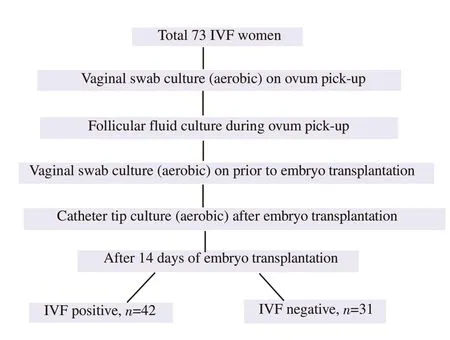
Figure 1.Flow chart of the study procedure.IVF: in vitro fertilization.
In the overall aerobic culture of all the women (pregnancy positive and negative),Enterococcus faecalis,Streptococcusspp.,Candida,Escherichia coliandKlebsiellawere detected.ButEnterococcus faecaliswas found to be most prevalent (26.03%in follicular fluid,9.59% in vaginal swab,and 6.85% in catheter tip) as compared to other bacteria.The microbial infection rate was detected higher in follicular fluid and vaginal swab culture but less in catheter tip culture (Table 2).
3.3.Follicular fluid culture in IVF positive and negative women
In the aerobic culture of follicular fluid,Enterococcus faecalis,Streptococcusspp.,Candida,andEscherichia colimicrobes were detected butKlebsiellawas not detected (Table 3).The follicular fluid microbial culture results are shown in Table 3.After statistical analysis of both the IVF positive and negative women’ age group,no significant differences were observed.The microbial culture report ofEnterococcus faecaliswas found to 22.58% in IVF negative women and 28.57% in positive women;however,it was not statistically significant (P=0.565).Similarly,Streptococcusspp.,Candida,andEscherichia colireports were compared between IVF positive and negative women,but no significant differences were observed (P>0.05).
3.4.Vaginal swab culture before ovum pick-up and embryo transfer
Vaginal swab culture reports on the day of ovum pick-up were compared between negative and positive pregnancy groups (Table 4).Microbial infection rate of theEnterococcus faecaliswas found to be higher in the negative group as compared to the positive group(16.13%vs.4.76%) but it was not statistically significant (P>0.05).Similarly,infection rate of theCandidawas higher in the negative group (16.13%vs.4.76%) but the difference was not significant(P>0.05).Streptococcusspp.,Escherichia coliandKlebsiellawere found to be slightly higher,although it was not statistically significant (P>0.05).The overall microbial infection rate was found to be higher in the negative women (38.71%vs.28.57%) but it was not statistically significant (P>0.05).
Vaginal swab culture reports of embryo transfer were compared between the positive and negative pregnancy groups.Enterococcus faecalisinfection rates were found to be higher in the negative women (16.13%vs.4.76%) but the difference was not significant(P>0.05).Candidainfection rate was found to significantly be higher in the negative group than in the positive group (9.68%vs.0%) andEscherichia coliinfection rate was found to be significantly higher in positive women than in the negative group (9.52%vs.0%).The overall microbial infection rate was found to be higher in the negative pregnancy women group (38.71%vs.26.19%) but it was not statistically significant.In the positive patient group,73.81%were not infected with any bacteria (Table 4).

Table 2.Most prevalent aerobic microbe in both IVF positive and negative women (n=73).

Table 3.Follicular fluid culture of IVF positive and negative women.

Table 4.Analysis of vaginal swab culture report on ovum pick-up and embryo transfer.
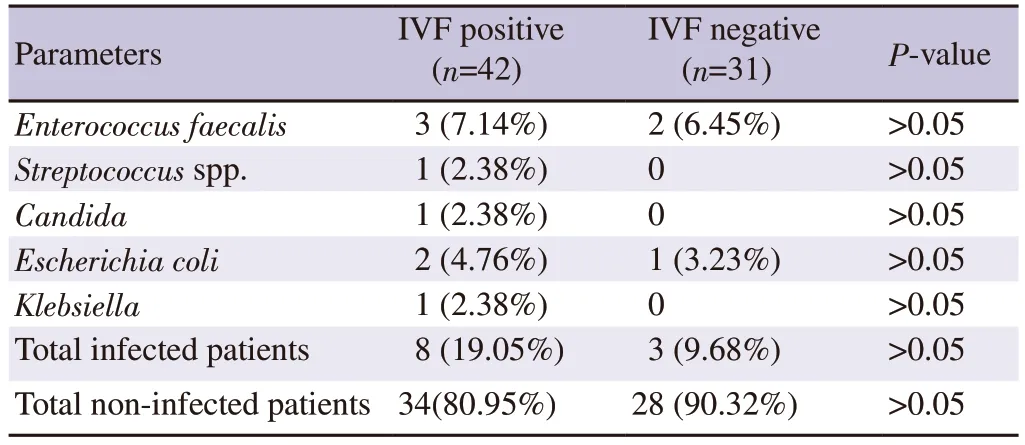
Table 5.Catheter tip culture.
3.5.Catheter tip culture
The catheter tip infection rate was found to be very less in both the IVF positive and negative groups,80.95% of the IVF positive women and 90.32% of negative women were free from bacterial infection.However,Enterococcus faecalisinfection rate was found most prevalent in both the IVF positive and negative women(7.14%vs.6.45%) compared to other bacteria.Overall all microbial infection rates were compared between positive and negative women and found to be higher in positive women;however,it was not statistically significant (P>0.05) (Table 5).
3.6.All microbial culture
In the present study,the overall average microbial infection rate was 29.76% in the positive pregnancy group and 32.26% in the negative group,although it was higher but not statistically significant (Table 6).
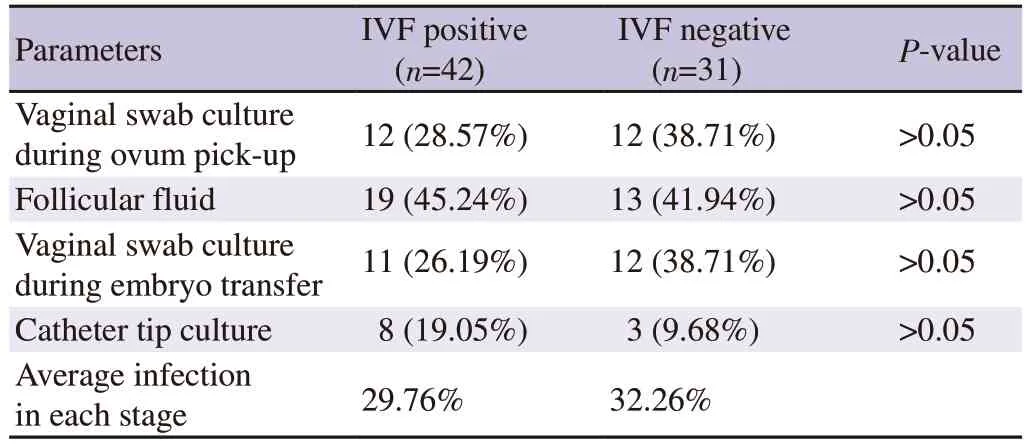
Table 6.All microbial culture summaries.
4.Discussion
IVF outcome depends on many factors including microbial contamination,which affects the IVF results.In women genital tract,many microbese.g.Enterococcus faecalis,Streptococcusspp.,Candida,Escherichia coli,etc.were found.However,no consensus guidelines are available yet on the microbiological evaluation of infertile couples prior to undergoing IVF. In a previous study,no significant difference was found between women who were vaginal culture-positive and negative in terms of pregnancy rates[16].Also,no significant difference was found between those who were treated with antimicrobial drugs after a culture-positive result[16].But Konget al[17] found that reduction ofLactobacillus,and the overgrowth ofGardnerella,Atopbium,andPrevotellapossessedstrong connection with the success of IVF.Moreover,Fuet al[18]found that lower abundance ofLactobacillus,and higher microbial diversity of vaginal microbiota in IVF recurrent implantation failure women.Hence,the present study focused on the impact of bacterial contamination in β-hCG IVF positive and negative women.
In the present study,57.5% of the positive and 43.5% negative pregnancy were found.The follicular fluid microbial culture was compared between IVF positive and negative women,but no significant differences were observed forEnterococcus faecalis,Streptococcusspp.,Candida,andEscherichia colibacteria.Similar to our study,Usmanet al[19] did not find statistically significant difference in the fertilization rates and pregnancy rates between the groups of women with positive follicular fluid bacterial as compared to with negative follicular fluid.However,in another study it was reported that the presence of particular microorganisms in follicular fluid had an adverse effect on IVF outcomes in both fertile and infertile women[5].The presence of microorganisms in the human follicular fluid may result in inhibition of the functioning of follicle-stimulating hormone,damage to the cumulus-oocyte complex,the subsequent immune response within the follicular fluid during folliculogenesis or in the uterus at the time of implantation either by the microorganisms themselves,or the microbial products of metabolism[20].Identification of bacteria colonizing the follicular fluid in couples experiencing a prolonged failure to conceive may present the clinician with an opportunity to initiate antimicrobial treatment before the next attempt at conception[20,21].This may be a reason for failure to IVF conception in the absences of another explanation.
The microbial culture of the vaginal swab culture on ovum pick-up and embryo transfer day was not significant between IVF positive and negative women.ButEnterococcus faecalisandCandidawere found to be most prevalent in IVF negative women in both the vaginal swab culture groups;however,it was not significant.Similarly,in the previous study the most prevalentEnterococcus faecalis(32.6%),Escherichia coli(22%),Candidaspp.(9.8%) were found in IVF women,and reported that it significantly decreases the levels of vaginalLactobacilli[22].In another study,lower fertilization,implantation,and clinical pregnancy rates were reported in IVF women that were positive toEscherichia coli,Enterococcus faecalis,Streptococcus agalactiae,andStaphylococcusspp.[23,24].It may be due to the fact thatEnterococcus faecalisis found in fecal matter;improper cleaning of substances containing fecal matter,or not washing hands after restroom use,can increase the risk of bacterial transmission.
In our study,the catheter tip contamination rate was 19.05% in positive women and 9.68% in negative women,but no significant differences were found.Our overall microbial contamination rate of catheter tip contamination rate (15%) was lower as compared to the previous study (33.75% and 49.1%) by Madukaet aland Egbaseet al[15,25].It may be the use of the administration of antibiotics before embryo transfer and improved culture systems that may reduce the growth of these organisms.A previous study also reported that the use of antibiotics significantly reduced catheter tip contamination rate[26].In contrast to our study,some researchers have found that the presence of vaginal-cervical microbial contamination at the time of embryo transfer is associated with significantly decreased pregnancy rates[14,27].Similarly,Fanchinet alfound that the presence of microbial flora of the cervix on the embryo transfer catheter tip is associated with poor IVF-ET outcomes[28].It is also found that presence of hydrogen peroxide producingLactobacillusspp.from the vagina/endometrium was associated with improved embryo transfer rates and successful IVF pregnancy outcomes[29].However,the presence of bacteria other thanLactobacillusspp.(includingEscherichia coli,Streptococcusspp.,otherEnterobacteriaceae,Staphylococcusspp.,andHaemophilusspp.) reported as vaginal flora,was associated with a decreased number of successful IVF outcomes and an increase in early miscarriage rates[28-31].This microbial infection may decrease the embryos capability to implant due to the effects on the embryo itself and/or the endometrium.Before implantation,the zona pellucida of the embryo which has a barrier function against infection is lost at the cleavage stage,thus exposing the embryo to the detrimental effect of bacteria[30,31].It has also been proposed that any acute inflammatory response in the endometrium will generate cytokines,macrophages,prostaglandins,and leukotrienes resulting in some form of subclinical endometritis with consequent deleterious effect on embryo implantation[32].
Overall,in our study we didn’t find any significant association between microbial infection and IVFβ-hCG outcomes.It may be due to the small sample size and the use of the antibiotics after ovum pick-up.It is our recommendation that for the better association of vaginal microbiota and follicular fluid with IVF outcomes a large numbers of sample sizes would provide better association.
In conclusion,in the study the microbial infection rate ofEnterococcus faecalisis found to be most prevalent in both the IVF positive and negative groups compared to other bacterial infection.The microbial infection rates of ovum pick-up vaginal swab culture and embryo transfer vaginal swab culture are found to be higher in IVF negative women,but it is not significant.The follicular fluid microbial infection rate is found to be slightly higher in IVF positive group but it is not significant.The catheter tip contamination rate is found to be very less in both the positive and negative women and no significant difference is observed between two groups.Overall,in our study the aerobic microbial culture report of ovum pick-up vaginal swab,follicular fluid,embryo transfer vaginal swab and catheter tip are not significant with β-hCG IVF positive.Our study suggests that during the IVF cycle microbial screening of vaginal swabs,follicular fluid and catheter tip culture may help to detect abnormal microorganisms.The use of antibiotics and an improved culture system may increase the IVF success rates.
Conflict of interest statement
The authors declare that there is no conflict of interest.
Acknowledgments
The authors are thankful to the entire supporting staff of the hospital and visiting embryologist for their support.
Funding
The study received no extramural funding.
Authors’contributions
All authors made remarkable contributions to this study.Dr Manoj Chellani designed the study and finalized the manuscript.Dr Sandeep Rahangdale analyzed the data and prepared the manuscript.Dr Manju Chellani edited and reviewed the manuscript.
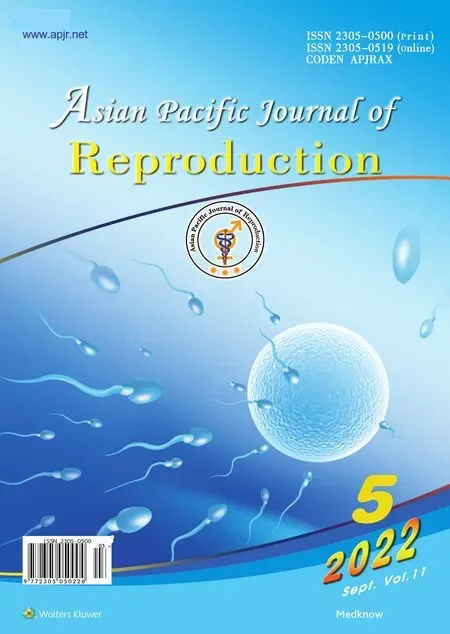 Asian Pacific Journal of Reproduction2022年5期
Asian Pacific Journal of Reproduction2022年5期
- Asian Pacific Journal of Reproduction的其它文章
- Impact of gamete health on fertilization and embryo development: An overview
- An incidental presentation of Herlyn-Werner-Wunderlich syndrome with secondary infertility: A case report
- L-carnitine improves developmental competence of buffalo oocytes in vitro
- Evaluation of intratesticular chlorhexidine gluconate for chemical contraception in dogs
- Oxytocin improves testicular blood flow without enhancing the steroidogenic activity in Baladi goats
- Anti-Müllerian hormone and antral follicle count predict ovarian response in women less than 45 years following GnRH antagonist multiple-dose protocol
